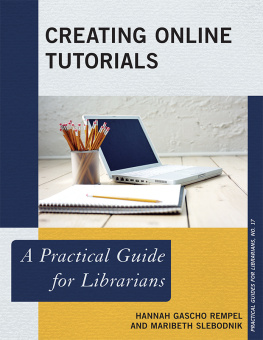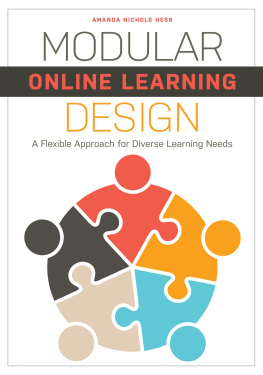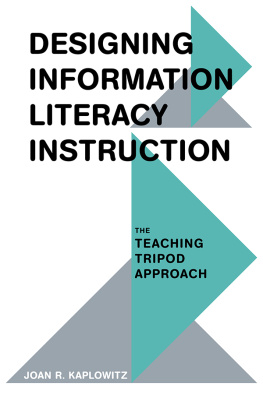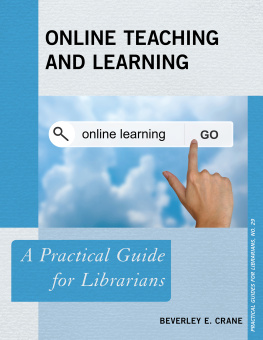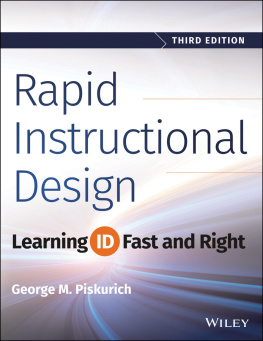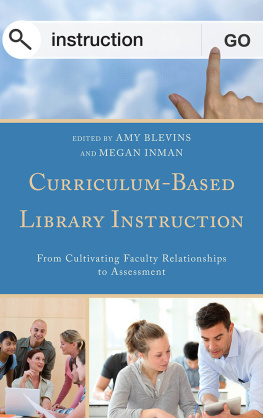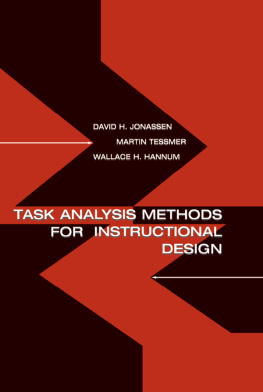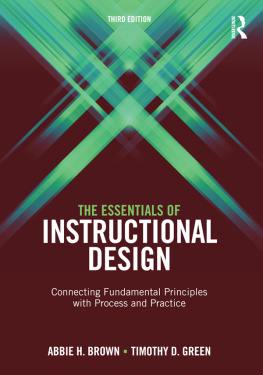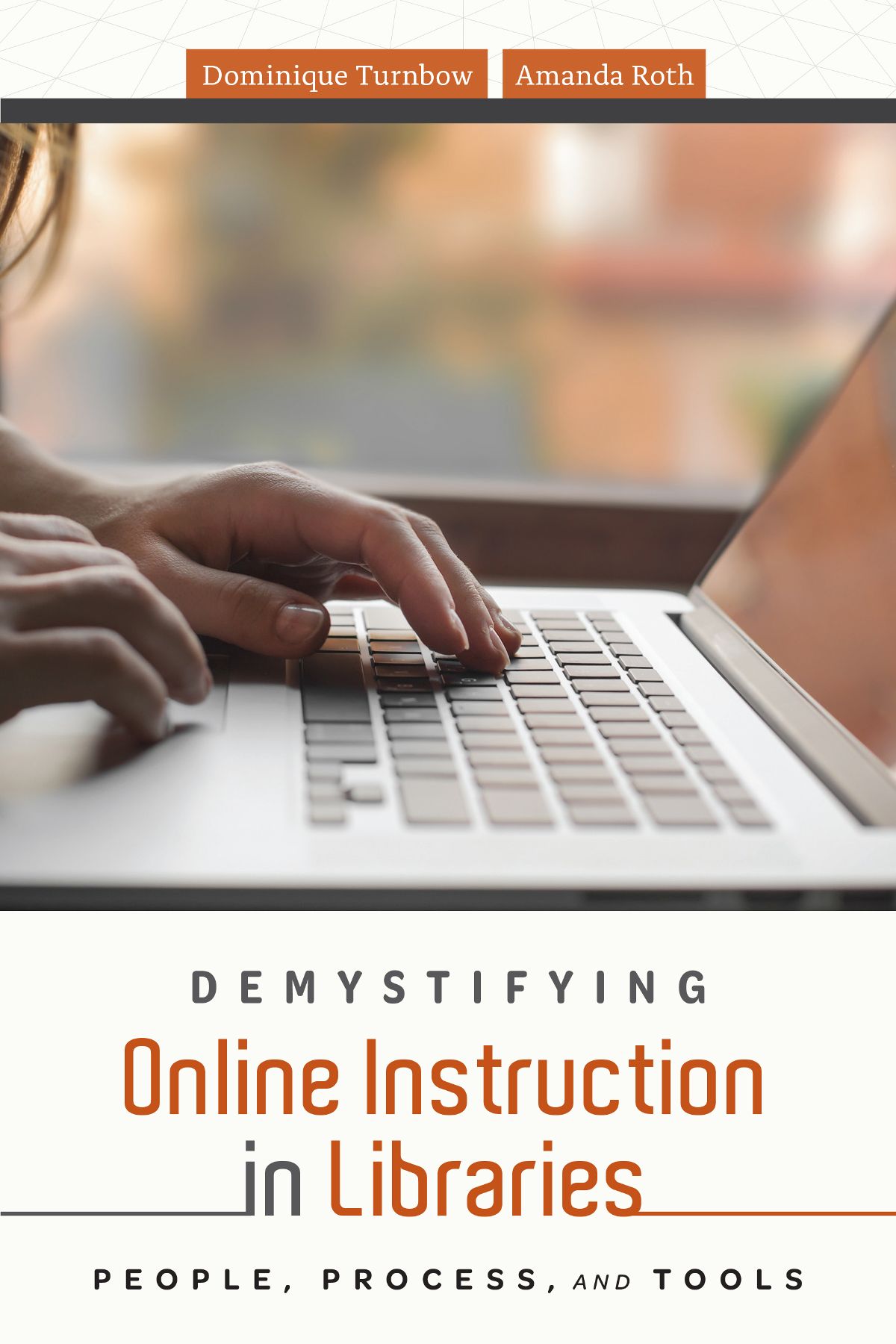
ALA Editions purchases fund advocacy, awareness, and accreditation programs for library professionals worldwide.
DOMINIQUE TURNBOW combines her expertise in instructional design with over a decade of experience working in academic libraries to deliver information literacy instruction effectively in online environments. In 2002, Dominique received her MLIS from the University of California, Los Angeles, where she began her career as an instruction and reference librarian before moving to the University of California, San Diego. Since receiving her MEd degree in 2013 she has applied her instructional design expertise to the design of online information literacy tutorials.
AMANDA ROTH uses her more than five years of experience with website design, information architecture, and knowledge of user experience best practices in the corporate world to create and deliver information literacy instruction through the use of online learning objects. Amanda received her MLIS from San Jose State University in 2013 and has since worked in academic libraries, providing instruction services to undergraduate students.
2020 by the American Library Association
Extensive effort has gone into ensuring the reliability of the information in this book; however, the publisher makes no warranty, express or implied, with respect to the material contained herein.
ISBNs:
978-0-8389-1937-8 (paper)
978-0-8389-1938-5 (PDF)
978-0-8389-1939-2 (ePub)
978-0-8389-1940-8 (Kindle)
Library of Congress Cataloging-in-Publication Data
Names: Turnbow, Dominique, 1978- author. | Roth, Amanda, 1977- author.
Title: Demystifying online instruction in libraries : people, process, and tools / Dominique Turnbow, Amanda Roth.
Description: Chicago : ALA Editions, 2020. | Includes bibliographical references and index. | Summary: This book will help librarians plan for staffing, skills, and processes that will lead to effective, online information literacy instructionProvided by publisher.
Identifiers: LCCN 2019026650 (print) | LCCN 2019026651 (ebook) | ISBN 9780838919378 (paperback) | ISBN 9780838919385 (pdf) | ISBN 9780838919392 (epub) | ISBN 9780838919408 (kindle edition)
Subjects: LCSH: Information literacyStudy and teaching (Higher)United States. | Information literacyWeb-based instruction. | Academic librariesRelations with faculty and curriculumUnited States. | Web-based instructionEvaluation. | Instructional systemsDesign.
Classification: LCC ZA3075 .T87 2019 (print) | LCC ZA3075 (ebook) | DDC 028.7071/173dc23
LC record available at https://lccn.loc.gov/2019026650
LC ebook record available at https://lccn.loc.gov/2019026651
Cover design by Karen Sheets deGracia. Cover image SkyLine/Adobe Stock. Icons skypicsstudio/Adobe Stock.
Contents
Appendixes
When you think about remodeling a house, you know that many skilled individuals work on the project. From concept development to consulting architects to hiring contractors, it is assumed that a variety of skill sets are necessary for the project. The same is true of librarians who design and develop online information literacy instruction, who must master the variety of skill sets required to create effective and engaging online information literacy instruction. Yet, there is an assumption that a single individual hired as a librarian who also does instructional design is all that is required to create asynchronous online learning. It is this false assumption that prompted us to write this book.
This book is for administrators and librarians who want to provide online information literacy instruction but are uncertain of exactly what that entails. It will detail the work of instructional design and technology librarians to help you determine if this type of work is right for you. If you are already working as an instructional design or technologies librarian, this book will help you identify additional resources (people, process, and tools) that could benefit your work.
This book demystifies the instructional design and development process used to create online learning objects defined as any digital resource that can be reused to support learning. It will help you understand how instructional design principles and approaches can benefit your learners, regardless of how you deliver your instruction. It will also help you strategically think about the people and skills involved, the process of instructional design and development, and the tools used for online learning. It will provide you with examples of how instructional design teams work within academic libraries and will illustrate the diverse set of knowledge and skill sets used to create learning objects. Although we briefly review instructional design theories and development processes, we do so to illustrate the job knowledge and skill sets necessary to perform instructional design and development work, not to build your knowledge of specific instructional design theories and their applications. While this book wont transform you into an instructional design or technology expert or even introduce you to everything you should know about the field, we hope that youll be able to answer the question, why do I need an instructional designer and technologist in my library? To illustrate this point, throughout the book youll find sections called ID in Action that provide examples of how instructional design or instructional technology is being done in the library. If you are interested in developing instructional design and development skills, well provide you with a starting point at the end of the book.
After youve read this book, we hope that you will be convinced that creating effective and engaging online information literacy objects requires an investment in human resources that will benefit the instructional mission of your organization.
NOTE
.
Make Instructional Design Work for Your Library
I n the summer of 2014, the Council of Provosts asked the fledgling Learning Services Program at the University of California, San Diego to participate in a First Year Experience (FYE) pilot program. The Council envisioned that a librarian would provide a twenty-five-minute information literacy presentation to freshmen as one component of a larger session that included other campus units. The provost asked that the UC San Diego Library be prepared to scale instruction from the 600 self-selected students enrolled in the pilot to over 5,000 incoming freshmen each year in the event the program is launched across the entire campus.
It would be tempting to simply create a library orientation and ask a pool of librarians to present the presentation at the beginning of each fall quarter. However, scaling the orientation to over 5,000 incoming freshmen would be challenging. Using the expertise of an instructional design librarian, instructional technologies librarian, and instructional coordinator, the Learning Services Program created a learning solution that replaced the lecture format that was envisioned by the provost with a learner-centered, scalable, virtual scavenger hunt activity.
Unlike traditional scavenger hunts that lead students to specific spaces, the UC San Diego Library crafted an activity that not only introduced students to key service points but also provided them with opportunities to engage with some of the Librarys online resources. Creating the virtual scavenger hunt required the contributions of a variety of people: the instructional design librarian identified the learning goals and outcomes, the instructional technologies librarian selected a software platform and built the learning object, and the instruction coordinator worked with the FYE program and other service departments in the Library. The number of collaborators for this type of work is not unusual. Subject matter experts and instructional designers often work together to create online learning solutions. What made this unique is that the Learning Services Program had a team of librarians with expertise already in place to address this type of request.
Next page

